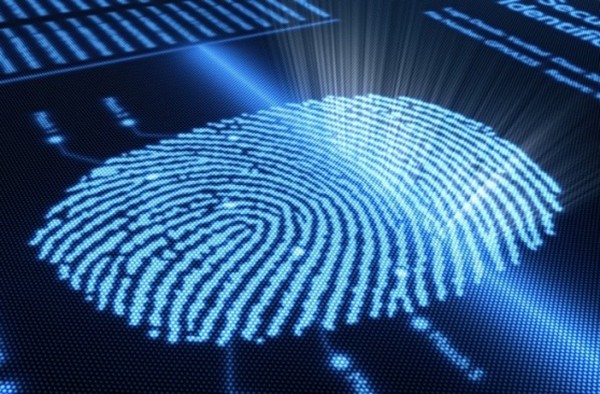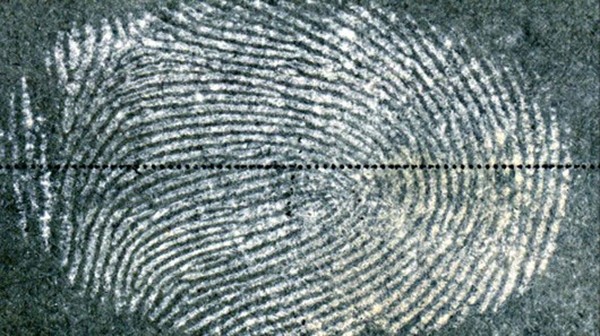3 basic methods of determining criminal traces
From the crime scene, the examiners will search for fingerprints, blood stains . to quickly find the killer.
The basic methods of determining criminal traces
On the morning of 7/7, the shocking public opinion about the case of 6 people in the same family including children were brutally massacred in Binh Phuoc, only one 18-month-old child (the youngest child of the victim) was lucky survive. Receiving the news, immediately, the police surrounded, sealed off the murder scene to find a way to investigate the culprit.
It can be said that, each case happens, the scene is the most important clue to search for the culprit. From the traces left behind seemingly inanimate, the police will follow them to find clues, to catch the evil enemies to speak up.
So what are the methods to determine the killer's footprint and what methods can help that clue speak up? Let's find out through the article below.
1. "Talking" fingerprints
At first glance, many people believe that your fingerprint and the person next to you seem not to be different. But in fact, each person's fingerprints have their own unique features, specific to each individual such as the end of the fingerprint line, the big or the small, the left or right .

When you reach the age of identity card, everyone has to roll their fingers to leave fingerprints in the police archives, this will help the criminal examiner agency to identify a perpetrator's fingerprint. fast, accurate way.
According to Tom Mauriello, a professor of crime at the University of Maryland, "Fingerprints are the most common physical evidence that we can find at the crime scene and they can be everywhere." .

Therefore, the scientific community always researches to find the method to determine the most effective fingerprints. Normally, the inspection team will sprinkle powder on suspicious surfaces with fingerprints. The powder adheres to the fat left by the hand, the excess powder will be wiped clean and eventually get fingerprints - help police find the object of investigation.
However, scanning the excess powder can obscure fingerprints that are very faint. On the other hand, for rough or porous surfaces, this technique becomes less effective.

Therefore, British experts used iron filings and glue on the surface or non-stick polymer polymer film to identify fingerprints.
Part of the excess iron filings are removed by magnets and leave fingerprints without damaging. The film will shape on the surface of the metal and change color when there is an electric current running on the surface.
2. Blood stains - silent evidence
Along with fingerprints, dried blood stains from the crime scene are also the not to be missed signs of inspection staff.

Accordingly, blood stains are usually checked through a chemical called luminol. This chemical will react chemically with the blood iron element - hemoglobin (the oxygen-carrying protein of red blood cells).
Thanks to that, even though the blood has dried up, the green light will glow, so you can see even in the dark. At this point, the examiners collect blood and conduct DNA tests to find the true owner of the blood stain.

However, the disadvantage of using luminol is that they can dilute the blood, making it difficult to identify the victim's DNA.
Therefore, American experts have created a camera capable of emitting infrared (IR) rays , determining the image of an object after capturing reflected light bouncing back into the lens. A dedicated filter placed in front of the camera lens can cause blood stains to change color and accentuate on the screen.
3. ADN - "great detective" talent
In 1984, geneticist Alec Jeffreys at the University of Leicester (UK) invented the technique of DNA identification, opening up new methods of investigation for criminal tracing technology.

It is because of the diverse arrangement of nucleotides in DNA (Deoxyribo Nucleic Acid) that no individual is identical in DNA structure and you become " unique" unless you have a brother or sister. twins with eggs. And thanks to that, the DNA became the " great detective" - a great potential tool against crime.
The DNA structure remains unchanged throughout life and can be collected from tissue that has been destroyed, burned badly, scavengers that have been buried for a long time . Just one hair, one feather, small piece of skin, cigarette butt leaves, saliva, fluid . are enough to test DNA.

When investigators have found evidence, they will place them in a paper bag or envelope and are always kept at room temperature, avoiding sunlight or high heat backgrounds that could damage the evidence.
These bags will be labeled, filled with information such as materials, where they were found, and where they were shipped. These procedures will ensure that the proof of ownership form is fully legal to begin conducting the analysis.
After an analysis of the collected DNA sample at the scene, the investigator will match the suspect 's DNA sample to rule out the suspect or give the grounds of accusation. It can be said that DNA is an effective tool for investigators to help them break down and summarize the perpetrators.
- Investigating crimes through traces of perspiration
- Vanga - Consultant of criminal cases
- Algorithm can distinguish 'good general, generality'
- Australia: Applying a new DNA testing method with an 79% accuracy rate
- Philae detected the signs of life on comets
- New drug screening and drug trafficking
- Methods of determining new archaeological dates
- The algorithm predicts whether a growing child can become a criminal
- Robot plays the role of a criminal detective
- Transform, fragment, hide: new mantra for hackers
- The basic knowledge is wrong, but many people still believe it
- Identify children at risk of committing crimes
 'Fine laughs' - Scary and painful torture in ancient times
'Fine laughs' - Scary and painful torture in ancient times The sequence of numbers 142857 of the Egyptian pyramids is known as the strangest number in the world - Why?
The sequence of numbers 142857 of the Egyptian pyramids is known as the strangest number in the world - Why? History of the iron
History of the iron What is alum?
What is alum?